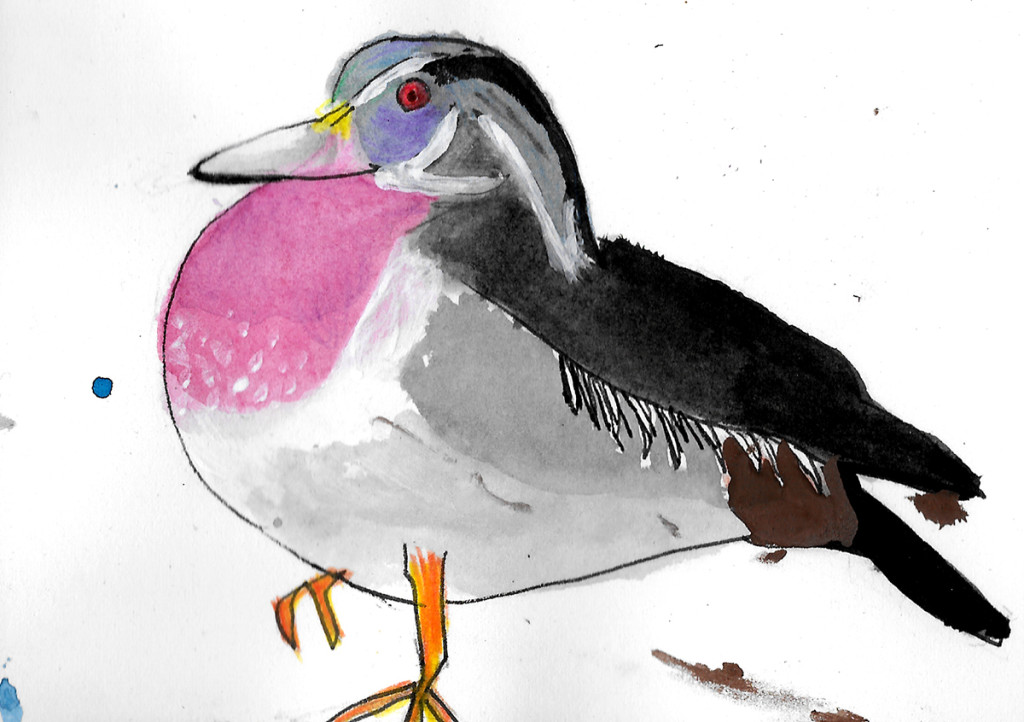First there is a flutter of movement. Or maybe first there is a peep, a fragment of song. I scan the trees. Someone else has spotted it. Someone more practiced. There it is. I see a small bird flying quickly from branch to branch. It settles. I put the binoculars to my eyes but I’m disoriented. They are pointed to where I saw the bird, but not exactly. This part takes practice I think. I scan the branches, which are now flat and close against the optics. I see the buds on the trees but no bird. Someone else sees it. A warbler of some sort. Does it have a yellow rump like a stick of butter? I’m a long way from being about to identify a bird. I first need to catch it in my lenses, hold it and then observe it. I scan the dark branches and pockets of white light. I put them down and look at the tree with my naked eye. Nothing. We move on to look for kingfishers by the pond. There is a viewing platform so we stand there and look around. Someone spots one. She points out the tree, halfway in the distance. She instructs me to focus on the bent branches a foot off the ground and move slowly up the tree. I do. I find the bent branches and like a child crawling in an unfamiliar space, slowly find the the edge of the tree where the kingfisher is perched. And then with the binoculars pressed resting on my my nose, I creep up the bark. I keep the edge of the the trunk to my left so I don’t get disoriented. I climb, I climb. I can’t find the bird. Now he’s moved to another tree. He flew to the other side of the pond. I look around without the binoculars. I see the the same of the bird perched in a tree closer to the platform. Now I’ve got him! I scan for some landmarks for my binoculars and not a particular V in the branches near the bird. I locate it, orient myself in the closeup. And I move slowly up and to a little to the right. And then I see him. He’s sitting perfectly still on this branch. His head topped with a soft, dark, punky crested crown. His black beak firmly pointed north. He waits. I watch.
